
I, for one, have found the epic feel of the trailers released so far to be intriguing. Turning a Sunday School story often geared toward children into a CGI-enhanced epic with the tumultuous emotions and decisions of each character embodied by world-class actors is quite a feat.
As I watched the trailers and spoke with a media company representative about the film location in Oyster Bay New York and Iceland, I had no concerns about a cheesy religious film. I'm pumped to see Aronofsky create narrative elements for his portrayal of Noah the environmentalist gladiator. My concern is the historical context. That is my speciality as a biblical historian. So I thought I'd write a few blogs on the historical context of Genesis 6-11 to share what Hebrew and Sumerian scholars have learned about the ancient flood and Tower of Babel stories. No surprise, much of what is still taught in churches and children's Bibles has been updated through recent research.
No surprise, much of what is still taught in churches and children's Bibles has been updated through recent research.
The early stories of Genesis 1-12 take place in ancient Mesopotamia. This land between the Tigris and Euphrates rivers attracted people with its ample water supply and annually flooded plains full of fertile silted farmlands. Seasonal rains up to 10 inches, annual run-off from northern mountains and a warm climate typically ranging between 60-85 degrees birthed one of the first great human civilizations. Back in 3,000 B.C. the Persian Gulf extended further inland than it does today regulating temps and providing a beach. Life was pretty good if you liked living on flat plains. If you happen to be a mountain person or didn't like the constant threat of floods saturating the entire land, it wasn't the best place.
If Noah built a boat in that context, the lush green forested shores of Oyster Bay and the hills and mountains in Iceland don't capture this geographical context very well. So should Aronofsky be critiqued for filming in Iceland and New York instead of Iraq?
Picking the right "land" does matter
To answer the question about geographic location, we must first strip all the references to "earth" (Hebrew eretz) in Genesis 6-9 of their universal meaning. The predominant meaning of the Hebrew word eretz is land all throughout Genesis (read more here). In the verses before and after the flood story in Genesis 2:10-13:15, every reference to eretz refers to a limited geographic region, except generic references to land as opposed to sea or sky in Gen 10:32 and 12:3: for example, the "land of Cush" (Gen 2:13), the "land of Nod" (Gen 4:16), "separated into their lands" (Gen 10:5), and "the land of Shinar" (Gen 10:10). Therefore, we must pay close attention to the perspective of the author and not the misleading translation of eretz as "earth" to determine the scope of the flood in Genesis 6-9. The Hebrew language actually has a clear term for the entire inhabited earth, tebel, which is found 37 times in the Old Testament. But not in Genesis 6-9.
So where is Noah's land that got flooded?
One geographical marker for the flood story is found by looking backwards from the next narrative in Genesis. Genesis 11:2 begins the Tower of Babel story by saying, "It came about as they journeyed east, that they found a plain in the land of Shinar and settled there." This indicates the flood might have occurred to the west of ancient Shinar, (i.e., ancient Sumeria) in Mesopotamia. We do know from archaeological evidence that a migration occurred southeast beginning around 5,000 B.C. down into Mesopotamia.
Where did the people come from? Now that has a more interesting answer than most ancient migration questions I've asked.
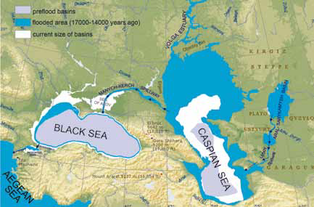
The period before the migration into Mesopotamia, generally from 15,000 B.C. to 5,000 B.C., witnessed dynamic weather conditions and water level changes. The last major ice age was ending. Glaciers, like the one across western Russia, were melting. Sea levels were rising. Torrential rainstorms were fueled by warmer temps picking up more evaporating water in rain clouds. The face of the planet was changing.
The land north and west of Mesopotamia experienced extreme geographic changes. Geological and fossil evidence indicates the Caspian Sea swelled to over three times its size during different climate and flood periods. Similarly, flat land good for farming next to the Black Sea turned into the bottom of the sea as the shore expanded 24 miles. Ancient inhabitants were flooded off farms all over the place as shorelines expanded.
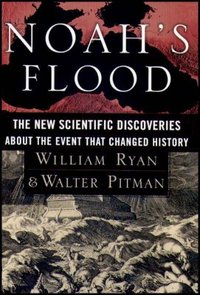
Two scholars from Columbia University dug up evidence of a major flood right before the migration into Mesopotamia mentioned in Genesis 11:2. Based on geological and fossil evidence, Walter Pitman and William Ryan reconstructed a time when the Black Sea changed from a smaller freshwater lake to a flooded Sea full of swelling ocean water. The speed of the flood is uncertain, but the water rose about 500 feet some time between 5600-5100 B.C.
PBS, ABC, FOX and National Geographic have all explored the theory of Noah's flood story recalling the Black Sea flood. Pitman and Ryan published it in a 1998 book Noah's Flood: The New Scientific Discoveries about the Event that Changed History. Underwater archaeologist Bob Ballard attempted to test the theory and discovered an ancient shoreline in the Black Sea dating to around 5500-5000 B.C. His finding supports the theory that over 150,000 kilometers of land flooded around that time. How? The rising Mediterranean Sea breached a sill and rushed over land creating the Bosporus Strait, in a relatively sudden and permanent event. Storms, lightning, earthquakes and other geophysical disturbances accompanied the catastrophe. Such an event would have created the type of devastation witnessed in Southeast Asian coastal communities during the 2004 Tsunami.
If Genesis 11:2 tells us we should look west of ancient Mesopotamia for a major flood around 5,000 B.C., then the Black Sea deluge around 5,500 B.C. is a good candidate for the historical events behind Noah's flood story. In this scenario, Noah may have been familiar with boat-building since he lived in a coastal village.
This theory does require localizing one's interpretation of the flood. It would mean "all the land" in Noah's experienced world was flooded, and he preserved the types of animals living in that region--a sensible move since they could provide his livelihood. It also requires reading the story through the storyteller's perspective. The language about "covering all the land" would be a localized hyperbole better translated as "tons of land was flooded as far as I could see."
This theory has been challenged by other geologists and archaeologists (not to mention young earth creationists who don't like changing the classic children's story), and I am in no position to make an expert judgment about geological observations. International geologists don't even agree on the timing, severity, size or direction of the Black Sea flood. A massive volume of papers were published in a 2006 book The Black Sea Flood Question to facilitate an international assimilation of data. The data revealed periods where water flowed into the Black Sea and out of the Black Sea and even between the Caspian and Black Seas. No singular linear progression in one direction occurred throughout the last 20,000 years. However, the Black Sea rise around 5600-5100 B.C. remains likely.
If this theory holds water (ha ha, I couldn't resist!) and reflects the historical event behind Noah's flood story, the Oyster Bay shore in New York with its lush green forested ecosystem and the hills and mountains of Iceland are a good backdrop for the film. There are reasonable similarities to the ancient fertile forested lands surrounded by mountains in the Black Sea region (see photo of farm lands around the mountains of Ararat below just east of the Black Sea). If the evidence did support the Black Sea flood as Noah's flood, I'd congratulate Aronofsky for well-chosen film locations.
Biologos points out, "Conflicts with the Black Sea explanation do exist, however. For example, 5500 B.C. is too early for Noah to have used metal tools to create the ark, and the location of the Black Sea does not fit the Sumerian and Babylonian accounts of the flood, which strongly suggest that it took place in Mesopotamia." The striking similarities among the Hebrew, Babylonian and Sumerian accounts of the flood do suggest the other stories can add helpful details about the location of the historical flood.
The Sumerian King List orients all Sumerian history in relation to the great flood. According to the ancient list, the Sumerian King Ziusudra (translated "Noah") reigned during the great flood and escaped on a boat. He lived in the Mesopotamian city of Shuruppak and roughly dates to c. 2850 B.C. Should we trust this alternate historical record?
Archaeologists have dug up deposits in three locations (Shuruppak, Uruk, and Kish) of a significant Mesopotamian flood around this time. These ancient Sumerian cities are all located in the low-lying basin between the Tigris and Euphrates rivers. Excessive rains, run-off from the northern mountains, tidal waves, or a combination of these events could all create the hazardous flood conditions of the Hebrew, Babylonian and Sumerian flood accounts. But is that enough evidence to locate the flood in Mesopotamia?
One significant difference between the facts of the flood story in the Sumerian record and Genesis is the boat landing site. The Sumerian story has Noah landing on top of an ancient Sumerian temple, a ziggurat, to offer a sacrifice in the middle of the river flood. The Babylonian story lands the boat on Mount Nimush (Nisir) in a mountain range north of Mesopotamia. Genesis vaguely puts the boat landing in the "mountains of Ararat."
The plural Hebrew phrase refers to the range of mountains extending from the Black Sea all the way down the northern boundary of Mesopotamia into Iran. It's an imprecise location. Those who mistakenly associate the mountain range with the singular "mountain of Ararat" in present-day Armenia tend to favor a Black/Caspian Sea theory for Noah's flood or require a Tidal wave to push the boat northwest out of Mesopotamia. If, however, the plural Hebrew phrase is interpreted correctly as a long mountain range, the flood still could have occurred in the present-day Persian Gulf region with the boat landing in the mountains of present-day Iran. Still, neither technical interpretation of the "mountains of Ararat" is advisable. Since the "mountains of Ararat" were generally known as the highest mountains in the known world at that point, the story is simply trying to emphasize the height and extent of the flood. It need imply nothing more than the boat came to rest on the higher ground on the northern side of the Tigris-Euphrates basin.
Don't believe me? Think about the olive branch in Noah's flood story. Olives do not grow above 5,000 feet of elevation. However, all the traditional mountain sites for the ark's landing in the ancient Ararat range stand thousands of feet higher than that (mount Ararat itself, mount Cudi, and mount Nisir). So Noah could not land on a high mountain and send out birds for an olive branch. If there is any veracity to this element of the story found in both the Hebrew and Babylonian stories, the boat must land at a lower elevation in a sub-tropical climate where Olive trees thrive. Who knew that is exactly what we had in Mesopotamia where olives were grown in antiquity.
Changing one's perception from a global flood to a local flood in a low-lying basin between two rivers in present-day Iraq can seem irresponsible. What do you do with Genesis 7:20, "The water prevailed fifteen cubits higher, and the mountains were covered"? Good question. Easy answer. The Hebrew word ma‛al, often translated "higher" simply means "upward." So the text is saying the flood increased water levels at least 15 cubits (~22 feet) deep. This doesn't mean the waters rose no higher, but rather this is likely the greatest depth measurable using the ancient practice of a navigation pole. Who knows how much higher the actual depths were measured at different locations.
And what about covering all the mountains? The Hebrew word har, typically translated mountain in Genesis 6-9, refers most often to hills rather than mountains in the Bible. With the limited elevation change in the Mesopotamian basin, all the "hills" in the vicinity could be covered with a flood not much higher than 15 cubits. With a proper understanding of the Hebrew language, Genesis 7:20 should more clearly read, "The waters rose up at least 22 feet and covered the hills." Measuring depth with a stick was a normal practice of boat navigation on rivers. Just like sending out birds to collect items from land is a common and ancient navigation practice.
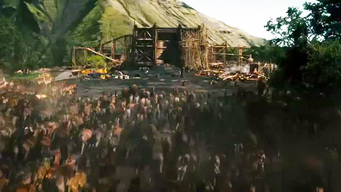
All this to say, sorry Aronofsky. You chose the wrong film location. The land should be flat. Lush rolling hills forested with trees doesn't fit. I haven't seen the film yet, but I can see in the trailer a giant mountain located directly behind the location the ark is built. Of course, since you based the film on your graphic novel rather than a historical portrait of Noah, I'll still go see the film.
With that question answered, I will move on to blog #2: Does the message of Aronofsky's Noah movie match the meaning of the Genesis 6-9 flood story?
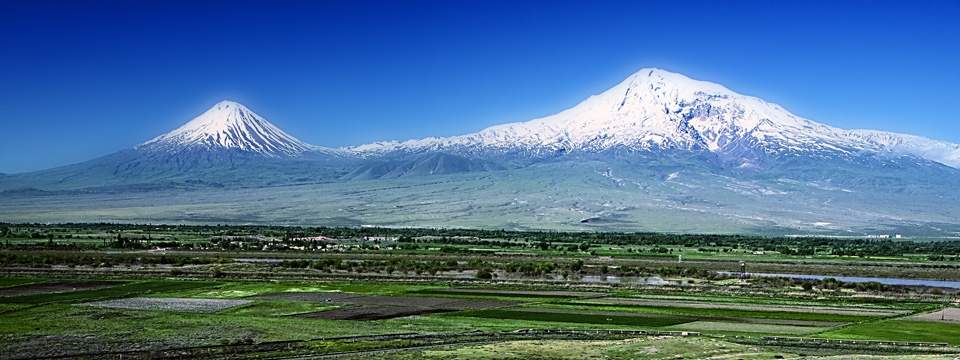
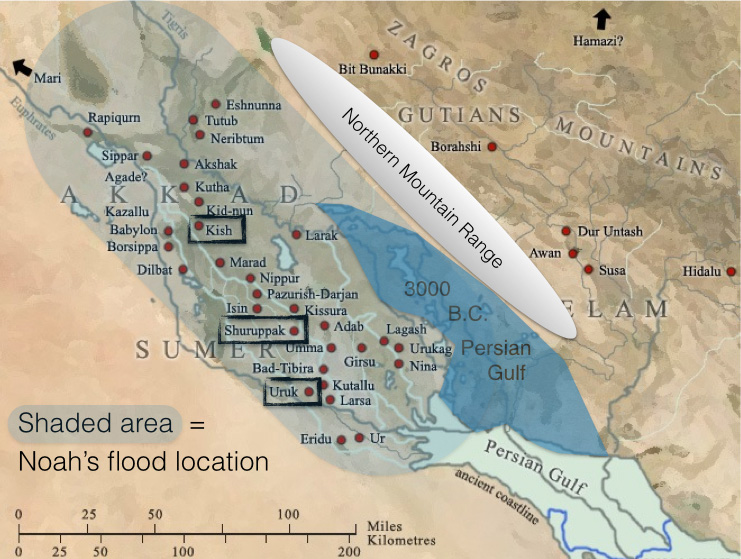






 RSS Feed
RSS Feed
